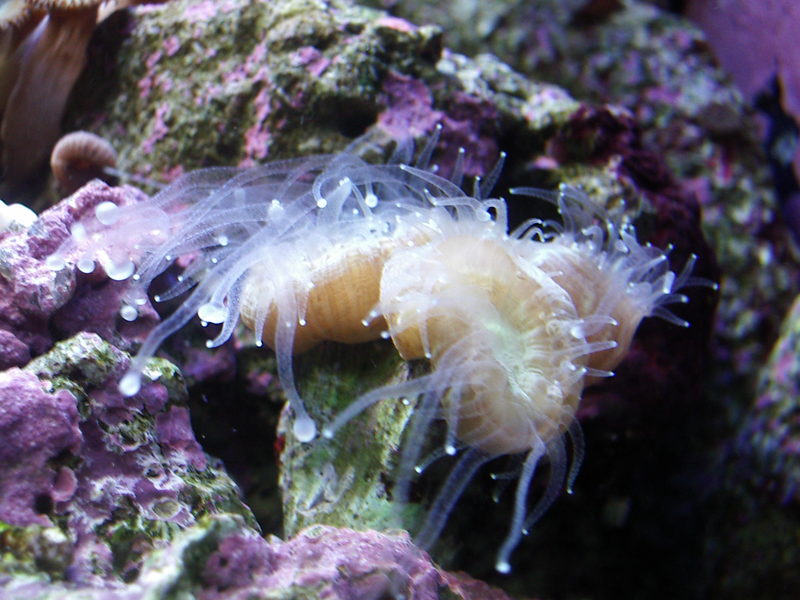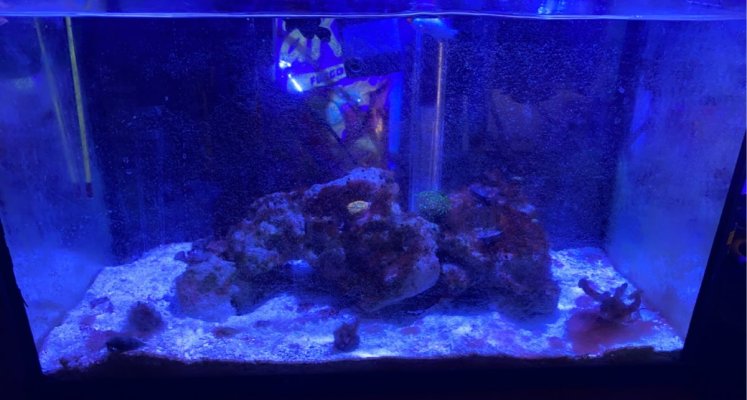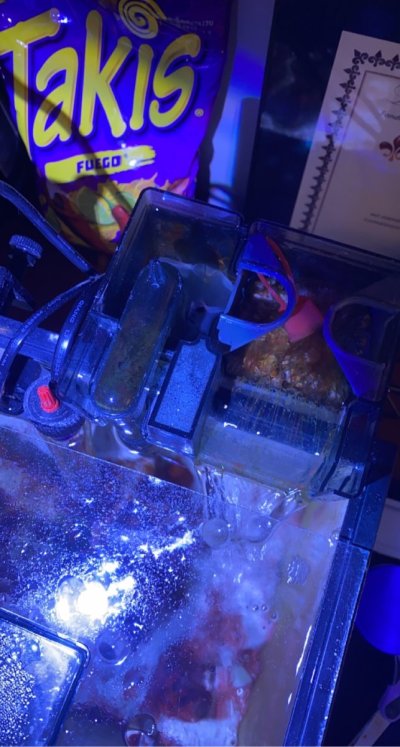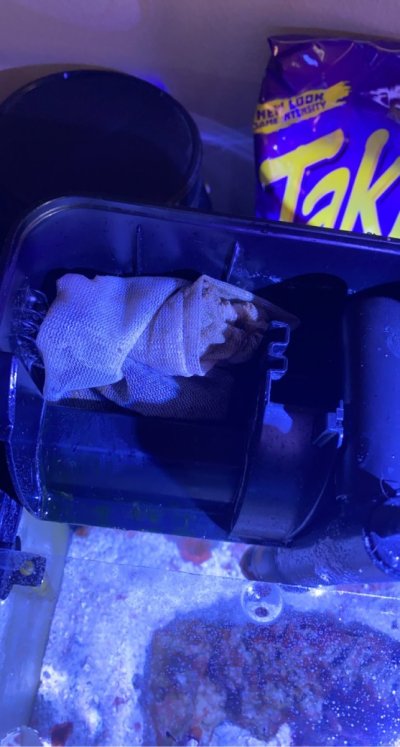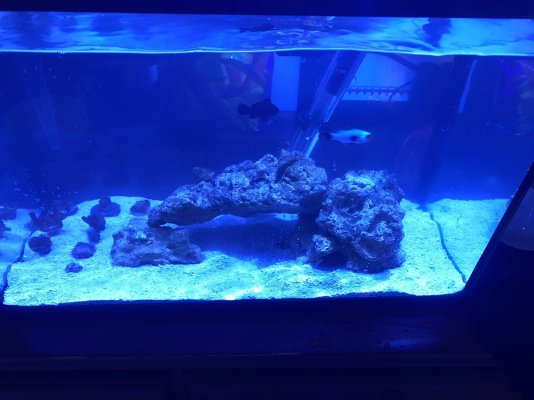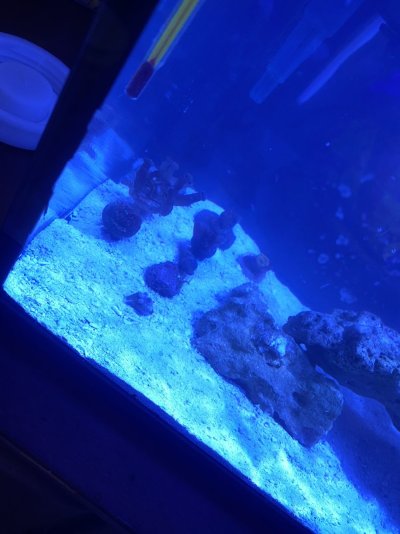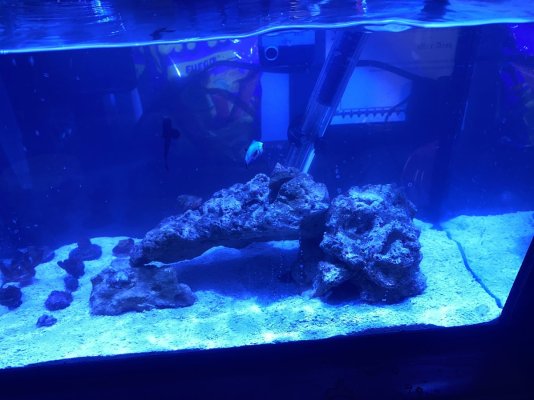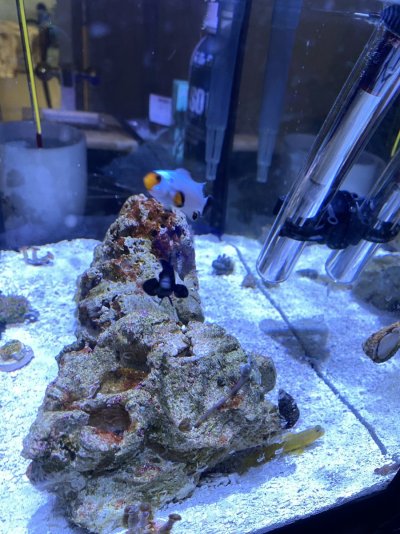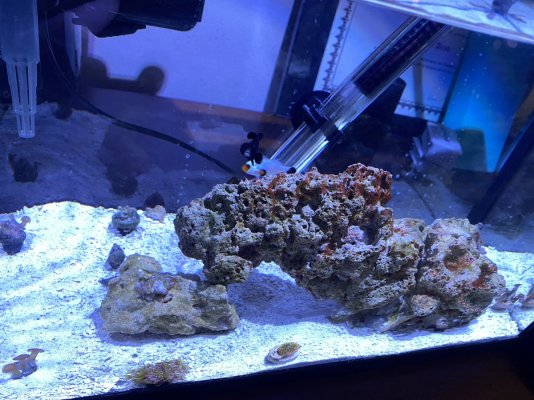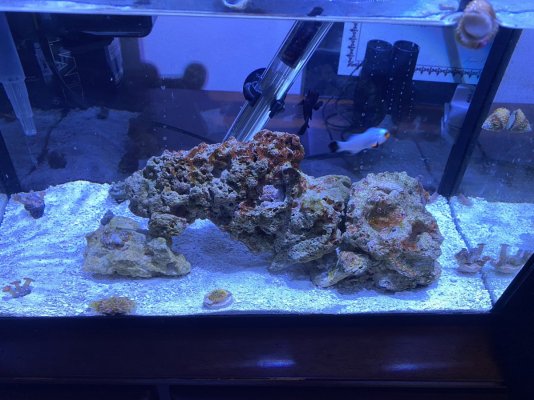This is probably my fiftieth rip clean thread, they tend to go out pages and pages of jobs over time. Let’s start a new 2022 one here
reasons rip cleaning is the best option for nanos to rid your tank of cyano and dinos: known fix date and no tradeoff invasions. What do we see in the dinos thread 450+ pages? Dinos tanks changing to gha wrecked tanks and taking six months to become that way. the keeper might possibly lose dinos, but they gain a completely green wrecked tank mostly. Yes I’m aware there are cures among the 450 pages, but that’s a ratio nano reefers don’t have to entertain, large tankers do. Rip cleans have only preserved and saved reefs, we have no deaths or losses in ten years logging them. Ridding a tank of waste + invasion cells is good, not bad, It’s why we collect all the best after pics for everyone in rip clean tanks
rip cleaning is simply taking your tank apart and cleaning it vs listening to the masses and not rip cleaning, while measuring and reacting N and P levels off non digital kits that aren’t accurate when compared to digital kits in myriad posts. Gha erupts from these miscalculations is what I’m finding. As we rip clean invaded reefs here, watch how many just stay clean and don’t have months of toil. We don’t ID anything, we don’t care about your params because they aren’t accurate even when relayed, test kit comparison threads show.
large tanks are too much work for rip cleans, this thread is for easy access nanos. The one reason a nano owner wouldn’t want to rip clean is because it’s a cheat that doesn’t expand the science of invasion suppression in large tanks. If you want to pay your time and money to study that, don’t rip clean. If you master ways to not need rip cleans to fix -others- tanks, then you’ll be saving tons of water and work for the aquarium world. Rip cleans are wasteful of water (because we flush sand until it’s clean this takes hours) and deep cleaning also take a lot of effort.
but if you want your reef fixed right now, today, quit hesitating and let’s Caesar Milan your reef tank, it’s misbehaving and you’ve been allowing that
B
though it will take me a while to build up jobs, what’s coming is hundreds of excellent after pics just like the sand rinse thread shows. We’ll be repeating those exact steps here, for the win
reasons rip cleaning is the best option for nanos to rid your tank of cyano and dinos: known fix date and no tradeoff invasions. What do we see in the dinos thread 450+ pages? Dinos tanks changing to gha wrecked tanks and taking six months to become that way. the keeper might possibly lose dinos, but they gain a completely green wrecked tank mostly. Yes I’m aware there are cures among the 450 pages, but that’s a ratio nano reefers don’t have to entertain, large tankers do. Rip cleans have only preserved and saved reefs, we have no deaths or losses in ten years logging them. Ridding a tank of waste + invasion cells is good, not bad, It’s why we collect all the best after pics for everyone in rip clean tanks
rip cleaning is simply taking your tank apart and cleaning it vs listening to the masses and not rip cleaning, while measuring and reacting N and P levels off non digital kits that aren’t accurate when compared to digital kits in myriad posts. Gha erupts from these miscalculations is what I’m finding. As we rip clean invaded reefs here, watch how many just stay clean and don’t have months of toil. We don’t ID anything, we don’t care about your params because they aren’t accurate even when relayed, test kit comparison threads show.
large tanks are too much work for rip cleans, this thread is for easy access nanos. The one reason a nano owner wouldn’t want to rip clean is because it’s a cheat that doesn’t expand the science of invasion suppression in large tanks. If you want to pay your time and money to study that, don’t rip clean. If you master ways to not need rip cleans to fix -others- tanks, then you’ll be saving tons of water and work for the aquarium world. Rip cleans are wasteful of water (because we flush sand until it’s clean this takes hours) and deep cleaning also take a lot of effort.
but if you want your reef fixed right now, today, quit hesitating and let’s Caesar Milan your reef tank, it’s misbehaving and you’ve been allowing that
B
though it will take me a while to build up jobs, what’s coming is hundreds of excellent after pics just like the sand rinse thread shows. We’ll be repeating those exact steps here, for the win
Last edited:




